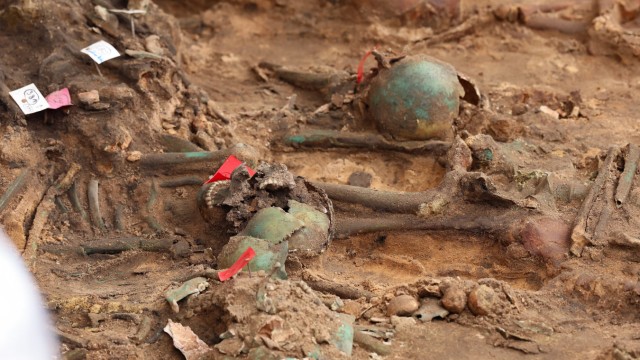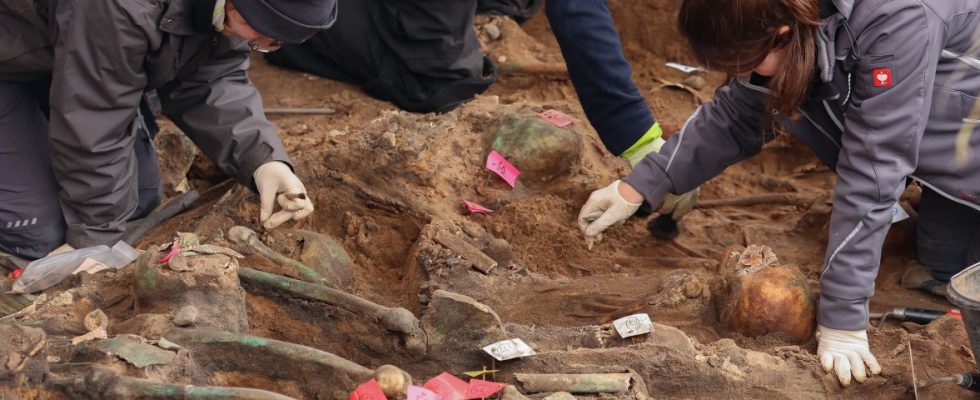Experts are currently uncovering the bones of hundreds of plague victims in Nuremberg. According to city archaeologist Melanie Langbein, the site is the largest plague cemetery in Germany – possibly even Europe. The excavation has high scientific value, Langbein said on Tuesday. This could provide important insights into the development of the plague. A collaboration with the Max Planck Institute for Evolutionary Anthropology in Leipzig is already in prospect.
Experts assume that there are around eight mass graves on the site. An excavation company is currently working on the third of these. Around 800 deaths have been documented so far, explained excavation director Florian Melzer. According to projections, well over a thousand dead people could be buried there. According to Langbein, they probably died in the first half of the 17th century. In 1632/33 there was a large wave of plague in Nuremberg with more than 15,000 deaths, said the city archaeologist. Exploration work revealed the first indications of the graves last August. “We were also surprised that it reached these dimensions,” said Langbein. A nursing home and apartments for senior citizens are to be built on the approximately 5,900 square meter site.
The skeletons were discovered during construction work on the site for a new retirement home.
(Photo: Daniel Löb/dpa)

In the 17th century there was a large wave of plague in Nuremberg with more than 15,000 deaths.
(Photo: Daniel Löb/dpa)
According to experts, the archaeological excavations are complicated. The bones are very fragile, said Melzer. In addition, the dead lie in many layers on top of each other in the graves. Some of the skeletons were damaged because a bomb hit the property during World War II. Overall, the dead were relatively well preserved, said Langbein. These include children, old people, women and men – a cross-section of the population at the time.
In some cases, remains of clothing such as buttons, eyelets and hooks have been preserved. According to Melzer, some of the dead were buried in shrouds, while others appear to have been thrown in. There is still a lot of research work to be done by the experts, as Langbein emphasizes. There is also evidence that there are also dead people from a cholera epidemic in the 19th century on the site. “We may not only have plague, but plague and cholera.”

